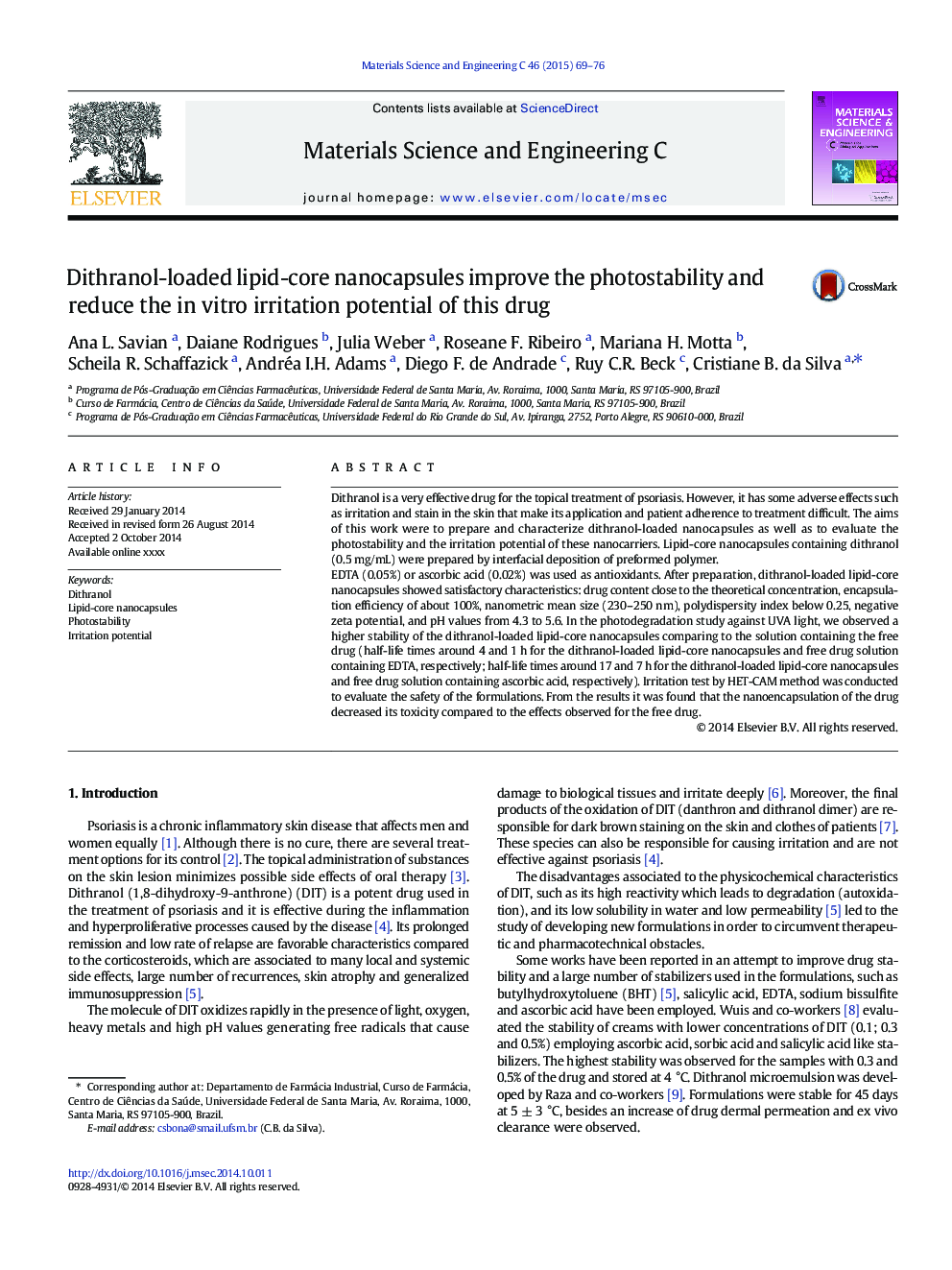| Article ID | Journal | Published Year | Pages | File Type |
|---|---|---|---|---|
| 7869780 | Materials Science and Engineering: C | 2015 | 8 Pages |
Abstract
EDTA (0.05%) or ascorbic acid (0.02%) was used as antioxidants. After preparation, dithranol-loaded lipid-core nanocapsules showed satisfactory characteristics: drug content close to the theoretical concentration, encapsulation efficiency of about 100%, nanometric mean size (230-250Â nm), polydispersity index below 0.25, negative zeta potential, and pH values from 4.3 to 5.6. In the photodegradation study against UVA light, we observed a higher stability of the dithranol-loaded lipid-core nanocapsules comparing to the solution containing the free drug (half-life times around 4 and 1Â h for the dithranol-loaded lipid-core nanocapsules and free drug solution containing EDTA, respectively; half-life times around 17 and 7Â h for the dithranol-loaded lipid-core nanocapsules and free drug solution containing ascorbic acid, respectively). Irritation test by HET-CAM method was conducted to evaluate the safety of the formulations. From the results it was found that the nanoencapsulation of the drug decreased its toxicity compared to the effects observed for the free drug.
Related Topics
Physical Sciences and Engineering
Materials Science
Biomaterials
Authors
Ana L. Savian, Daiane Rodrigues, Julia Weber, Roseane F. Ribeiro, Mariana H. Motta, Scheila R. Schaffazick, Andréa I.H. Adams, Diego F. de Andrade, Ruy C.R. Beck, Cristiane B. da Silva,
